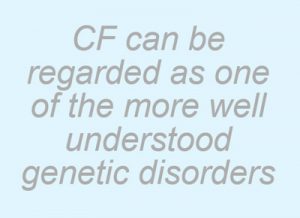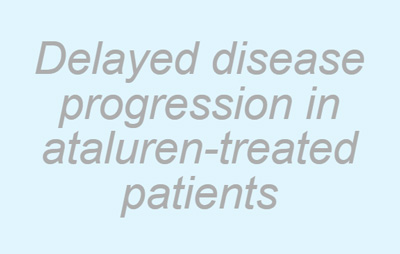Exploring the need for mutation-specific treatments in cystic fibrosis
Posted: 1 July 2016 | | No comments yet
Here, Caroline Richards, Editor of European Pharmaceutical Review, discusses cystic fibrosis and the treatment options that are currently available or in development…


Despite the fact that over 1,900 mutations of the cystic fibrosis transmembrane conductance regulator (CFTR) are known to cause cystic fibrosis (CF), a debilitating inherited genetic disorder that progressively reduces organ function over time, only two disease modifying treatment options exist – Kalydeco (ivacaftor) and Orkambi (a combination of ivacaftor and lumacaftor), both developed by Vertex Pharmaceuticals.


All other treatments on the market address the symptoms of the disease. In addition, Vertex’s drugs are only effective in CF patients with particular mutation types. There is, therefore, a substantial need for new therapies which target more of the mutations involved in CF. Meanwhile, specific CF symptoms can be linked to certain mutations, with the severity and types of symptoms varying hugely according to the specific defects with the CFTR protein involved. For example, nonsense mutations give rise to particularly severe phenotypes; people who have these mutations are unable to produce any CFTR protein, which results in worse symptoms than those who produce partial amounts. Currently, relatively little is known about the natural history of nonsense mutation CF (nmCF).
Introduction to CF mutations
The CFTR gene, found on human chromosome 7, is a large gene that encodes a protein of 1,480 amino acids, which is responsible for transporting chloride ions through the plasma membrane of cells and thus regulating the flow of water in tissues. It is the impairment of this process, or absence of the protein entirely, which results in the classic symptoms seen in CF: extremely salty-tasting skin, persistent coughing, wheezing or shortness of breath, an excessive appetite but poor weight gain, and greasy, bulky stools. Symptoms result from the lack of water movement across membranes, causing a build-up of mucus in tissues. Much of the morbidity and mortality in CF is down to the occurrence of pulmonary exacerbations, which typically develop in CF patients from early age.
As an autosomal recessive disease, mutations must arise in both copies of the CFTR gene for CF to occur. The World Health Organisation estimates that in the European Union one in 2,000-3,000 newborns is found to have CF, while the incidence of CF is reported to be one in every 3,500 births in the United States of America.
CF mutations can be categorised as falling into one of five categories based on how they affect the CFTR protein. Class I to III mutations generally result in a more severe CF phenotype, while those belonging to classes IV-V enable some functional CTFR protein to be produced and thus result in a milder form of the disease. The characteristics of each class can be summarised as follows:
- Class I: Shortened/absent protein
- Class II: Protein does not reach the cell membrane
- Class III: Channel incorrectly regulated
- Class IV: Lowered chloride conductance
- Class V: Incorrect gene splicing
Is has been estimated that around 85% of CF patients have Class II mutations; it is within this class that the most common mutation, F508del, occurs. In this mutation, three DNA nucleotides that comprise the codon for phenylalanine are deleted, resulting in a lack of this amino acid at the 508th position on the protein and the consequential mis-folding of the protein. The percentage of patients who have this type of mutation is thought to be around 70.
It is not yet clear how some of the mutations in CF result in particular health effects and much remains to be discovered. Interestingly, there is some evidence that the severity of CF can be influenced by other genetic and environmental factors, such as mutations in other genes besides the CFTR gene. However, again, little is known about this.
Treatment options
Despite there being some gaps in knowledge, CF can be regarded as one of the more well understood genetic disorders and research has paved the way to vast improvements in life expectancies over the past 30 years; while it used to be common for a person with CF not to live beyond childhood, many now live to nearly 40 years of age, as advances in treatments and technologies have made the potential for a cure ever more likely. However, the scope for improvement is vast and there is room in the market – and indeed, a high need – for many more disease-modifying drugs.
The main method for treating the lung problems for which CF is particularly well known is via chest physical therapy, exercise and medicines that clear away mucus. In addition, antibiotics such as tobramycin are prescribed to prevent or treat lung infections – a common occurrence in CF. A nebulised formulation of this drug can treat exacerbations of chronic infection with Pseudomonas aeruginosa. Anti-inflammatory drugs to help reduce swelling of the airways and bronchodilators to enlarge the airways are also main-stay treatments, while muscus may be thinned with the aid of dornase alfa, hypertonic saline and mannitol drug powder.


The first drug to treat the underlying cause of CF was Vertex Pharmaceuticals’ Kalydeco (ivacaftor), which was approved by the US Food and Drug Administration in 2012, shortly before it received the green light from the European Medicines Agency and was approved in Canada. Hailed at the time as a ‘wonder drug’ owing to it being the first medicine of its kind, Kalydeco demonstrated efficacy in patients with one of several specific CFTR mutations including: G551D, G1244E, G1349D, G178R, G551S, S1251N, S1255P, S549N, S549R and R117H. As a ‘potentiator’ of CFTR, the drug increased the likelihood that the defective channel would be open and enable chloride ions to pass through its pore. Currently, around 4-5% of CF patients are said to be able to benefit from Kalydeco.
Some three years later, in July 2015, Vertex went on to win FDA approval for its combination pill containing both ivacaftor and lumacaftor (marketed as Orkambi). Another disease-modifying drug that promises to improve CF prognosis, Orkambi is indicated for patients who carry two copies of the F508del mutation. The company previously reported that in clinical studies, the lung function of patients taking Orkambi improved by a statistically significant range of 2.6 percentage points to 3 percentage points. However, the FDA labelled the positive effect of the drug ‘modest’ at the time it was approved, and the price tag of more than US$300,000 (around Euro160,000) per year – a figure similar to those of other drugs for very rare diseases – has meant the drug has had limited uptake. Indeed, both England’s National Institute for health and Care Excellence and the Irish National Centre for Pharmacoeconomics recently stated that CF patients in the England and Ireland, respectively, would be denied access to the drug on cost-effectiveness grounds. Price negotiations continue and Vertex has been urged to provide a discount on its high asking price. The CF community has seen this as a major blow: around 500 people with CF could benefit from Orkambi in Ireland.
Vertex Pharmaceuticals has a third CF candidate whose future approval could be in the offing: VX-661, which is designed to re-position the defective CFTR protein, is indicated for patients who have one or two copies of the F508del mutation. It is currently in a Phase III trial assessing its efficacy in combination with ivacaftor. In 2015, Vertex reported that in a 12-week Phase II trial evaluating VX-661 in combination with ivacaftor in 39 people with CF who were aged 18 and older and had two copies of the F508del mutation, the combination regimen was generally well tolerated and there was a statistically significant improvement in lung function (as measured by percentage-predicted forced expiratory volume in one second; ppFEV1), at 4.4 percentage points at week 4 and 3 percentage points at week 12.
Nonsense mutations
With several promising CF drug candidates in clinical trials, it seems the dearth of available disease modifiers could soon be addressed, providing hope to millions. Another CF market contender that has reached late-stage clinical trials (all other CFTR modulators are in Phase II or earlier), is that of US-based firm PCT Therapeutics. Its drug, ataluren, specifically targets nonsense mutations (it is already approved in the EU under the trade name Translarna for the treatment of nonsense mutation Duchenne muscular dystrophy for patients aged 5 years or older). In CF, nonsense mutations are associated with particularly severe symptoms and so there is no doubt that it would be well received should the drug become available to people with nmCF.
Nonsense mutations are implicated in a variety of genetic disorders besides CF and they affect around a sizable 10% of CF patients. Genetically speaking, these mutations generate premature termination codons in the translation of the genetic code contained within mRNA, which leads to truncated non-functional or partly functional CFTR protein. If PCT Therapeutics’ candidate is approved, it would become the first treatment to address the underlying cause of nmCF. The drug interacts with the ribosome of the cell, enabling it to read through the premature nonsense stop signals on mRNA, promoting fully-functioning CFTR protein.


At the 39th European Cystic Fibrosis Conference held in Basel, Switzerland, in June, PCT Therapeutics presented promising new analyses from its previous double-blind, placebo-controlled pivotal Phase III trial in nmCF, known as Study 009, related to the effect of ataluren on exacerbations. In a poster presentation, the company explained that a reduction in exacerbation rate is an important clinical benefit since exacerbations are linked to “progressive loss of lung function, decreased quality of life, and increased risk of death.” The firm explained how a yearly decline in FEV1 of approximately 1.1–4.1% has been described in the overall CF population, depending on the age group.
Post-hoc analysis of the 48 week data showed that time to first exacerbation was longer in the ataluren arm than in the placebo arm, which is indicative of delayed disease progression in ataluren-treated patients not receiving chronic inhaled tobramycin; this difference was particularly marked in children. In addition, at 48 weeks, a statistically significant 5.7% difference in relative change from baseline in FEV1 (ppFEV1) favouring the ataluren-treated group versus placebo was reported in nmCF patients who were not using chronic inhaled tobramycin.
Ataluren also led to a 67% reduction in the number of days spent in hospital and a 20% decline in the need for antibiotics. These data certainly point to ataluren’s future potential as a disease-modifying therapy; PCT Therapeutics now plans to analyse longer-term follow-up data with the hope of obtaining further insights into the natural history of nmCF.
Summary
As the understanding of specific mutations within CF and how they result in particular symptoms increases, so does the potential for new drugs to become available which target the underlying cause of CF. However, there is still much to discover and understand about the intricate association between specific mutation types and resulting symptoms, and it is hoped – by the CF community and pharma companies alike – that further elucidation of the mechanisms at play, particularly with regard to the more severe phenotypes, will continue to reveal potential new treatment avenues.



